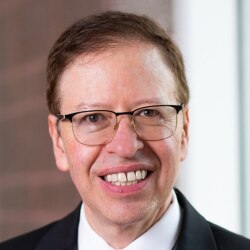Auditor report a reminder that UC compensation is out of control
Last week’s report from State Auditor Elaine Howell reveals some disturbing budgeting and compensation practices at the University of California’s Office of the President (UCOP). But the problem isn’t just limited to UCOP; it is a systemwide phenomenon. We have previously reported that Robert Reich makes close to $300,000 annually to teach one class at Berkeley and to complain about income inequality, while a dismissed football coach at the same campus received $1.8 million. We also found that ten retired UC academics were pulling down pensions of over $300,000 annually.
UC defenders would be correct in arguing that compensation practices are in line with those of top private universities. According to Forbes, eight University presidents received over $2 million in annual compensation in 2014. That included the presidents of SMU, Columbia, Northwestern and the University of Chicago. But when executives work in the public sector, there is normally an expectation of lower compensation in return for the privilege of providing public service. This is why top government executives like mayors and governors typically make less than $250,000 annually – and often a lot less. With a few notable exceptions, their salaries set a ceiling above which the compensation of other employees in the governmental unit do not rise.
Unfortunately, UC doesn’t abide by the principle of offering below market compensation for the public good. Instead, administrators are paying themselves whatever the market – and whatever insufficiently informed taxpayers – will bear.
Janet Napolitano made approximately $200,000 as Secretary of Homeland Security until 2013. Then, as President of the University of California, her base pay jumped to $570,000. But that’s only the beginning. She lives in a residence rented by the university at a cost of $11,500 per month. She also received other pay of $14,503. health benefits worth $6861 and a $33,250 employer contribution to her defined benefit pension plan. Assuming she remains in office until age 65 (in 2022) and her salary stays the same, she will be eligible for an annual pension of $128,250 (based on 9 years of service and a pension formula of 2.5% at 65).
But this generous pension (and any retirement benefits she accrued from past jobs) appears to not be enough. So the University also contributes 5% of her salary to a Defined Contribution pension known as the University of California Retirement Savings Plan. The university makes these contributions on behalf of all senior administrators at rates of 3% or 5% depending on pay grade. According to the State Auditor, these extra retirement payments cost UCOP over $2.5 million in the five fiscal years ending 2015-2016. Across the entire system, UC made $6 million in defined contribution plan payments in 2014-2015 – the most recent year for which figures are available.
Napolitano was the third highest paid employee at the UC President’s office in 2015. Ranked number two at UCOP in the university’s payroll database is John David Sobo, Executive Vice President of UC Health, whose gross pay was $787,000. And topping the list was Chief Investment Officer Jadeep Singh Bachher who pulled down over $1.1 million in 2015.
Again, it is worth noting that top asset management professionals in the private sector make over $1 million, but the question for UC is whether such compensation is appropriate in the public sector. Bachher’s pay is well above salaries paid to other public sector CIOs. For example. T. J. Carlson who manages the Texas Municipal Retirement System’s assets was making only $251,290 in 2015. Baccher even makes more that CalPERS CIO, Marcie Frost, who has a $300,000 base salary and a potential bonus of up to $120,000. At CalPERS, Frost oversees a portfolio of over $300 billion -many times larger than UC’s endowment.
Outside the President’s office, some UC employees are receiving even larger compensation packages. In 2015, the highest paid individuals were two UCLA athletic coaches. Football coach Jim Mora received gross pay of $3.5 million, while basketball coach Steve Alford made $2.7 million. To the extent that Bruins football and basketball generate income for the school, big pay packages may make sense in these cases.
Several other UCLA employees make over $1 million annually: these are mostly doctors that practice and teach at the UCLA Medical Center. Most of their income takes the form of “Other Pay” derived from patient services, but some receive base pay of $300,000 or more annually.
Finally, some retired doctors and other faculty double-dip: receiving both a high salary and a big pension. This is the case with Dr. Fawzy I. Fawzy, who received the highest UC pension in 2014: over $354,000. Fawzy was also paid $300,000 in 2015 for his work as a medical school Dean.
Fawzy is one of several hundred University of California “rehired retirees”: a status that is described here: http://ucnet.universityofcalifornia.edu/forms/pdf/returning-to-uc-employment-after-retirement.pdf. Transparent California lists 1000 UC employees with this status. Two of those employees received total compensation of over $600,000 in 2015.
Unless and until legislators take a holistic look at UC compensation policies, it will be impossible for them to weigh the system’s claims of poverty and demands for ever increasing taxpayer support. Regardless of whether one believes that an education at a public university is right or privilege, we should all be able to agree that the state budget should not be used to subsidize fat pay packages for educators claiming that they are providing a public service.
